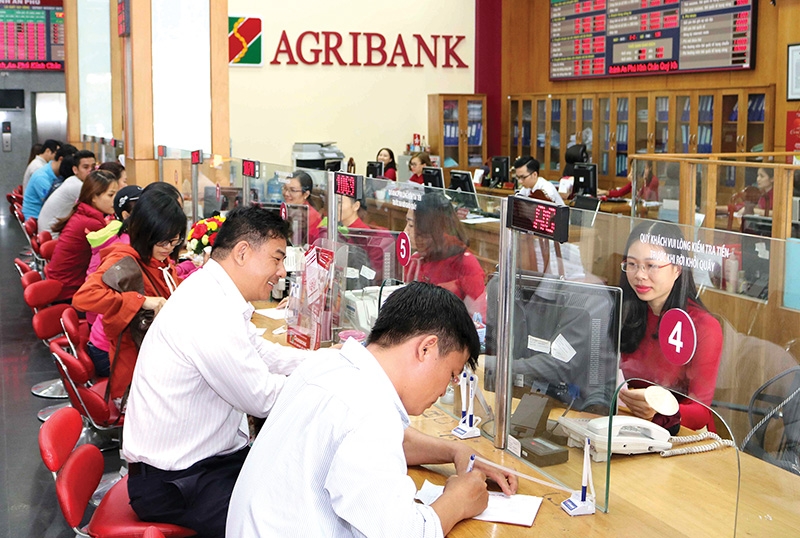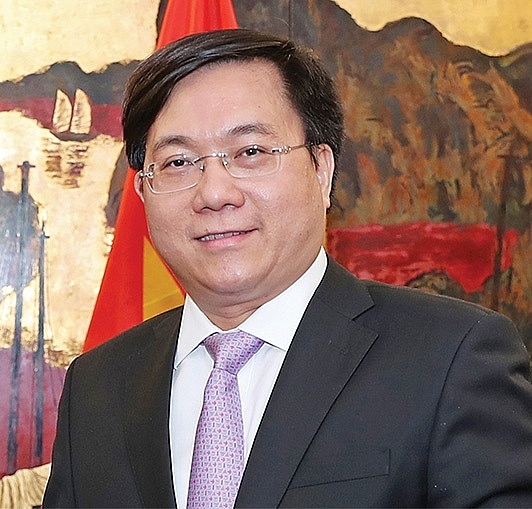Solving the puzzle of foreign interest in SOE equitisation
 |
| Tran Nguyen Tam Huong - Associate, Russin & Vecchi |
Recently, slow progress in equitisation and divestment of state-owned enterprises (SOEs) has been attributable to the current pandemic, but this is only a recent cause. More fundamental causes are overpricing of shares, the reluctance of local management to act, and bureaucratic inertia. Schedules have been set and deadlines missed. Most recently, many SOEs missed 2020 deadlines contained in Decision No.26/2019/QD-TTg and they have been reset for 2021.
According to the report of the Ministry of Finance’s Department of Corporate Finance, up to May 2021, the accumulated value of divested state capital is VND286.6 billion ($12.46 million). From that, the state budget is said to have realised over VND2.16 trillion ($93.9 million). Remarkable divestment could occur in Vietnam Rubber Group, Viettel, Vietnam Education Publishing House, and Vietnam Posts and Telecommunications Group, some of which are government icons.
In the first five months of 2021, amounts collected from equitisation and divestment was VND228 billion ($9.9 million). But expected revenues to the state budget in 2021 is VND40 trillion ($1.74 billion), according to projections in Decision No.1950/QD-TTg from last November. To reach this goal, Vietnam must attract significant foreign investment to equitise SOEs.
Necessary measures
The expectation is that SOEs can develop more efficiently if they take advantage of the experience, management, technology, and financial capacity of financiers from abroad. Their participation in SOEs is expected to help improve business efficiency and modernise corporate governance methods, so that the SOEs will gradually approach international governance standards.
Such enterprises have opportunities to improve their reputation and expand operations scale. According to the State Capital Investment Corporation, with the current participation of foreign investors in existing SOEs, the affected enterprises have gained certain success. Frequently cited examples are Vinamilk and Binh Minh Plastic JSC. Even so, attracting such investors in the equitisation plan in recent years has not been totally successful. Only a small number of SOEs have sold shares to strategic foreign investors through the formal process of equitisation.
There are a number of reasons why many overseas investors view the equitisation of SOEs as unattractive.
| Tran Duy Dong - Deputy Minister of Planning and Investment
The decision on classifying SOEs is hoped to aid restructuring and equitisation, creating more opportunities for foreign investors. As a general advice provider for the prime minister in re-ordering and renewing these enterprises, the Ministry of Planning and Investment has strictly followed strategies in Resolution No.12-NQ/TW to compose Decision No.22/2021/QD-TTg on classification criteria for SOEs, especially those undergoing restructuring from now until 2025. Restructuring SOEs in this timeframe will follow the targets of providing the overall classification criteria (industry, field, or area) in line with specific characteristics of each industry and locality; as well as generating revenues for the state to invest in socioeconomic development heading towards 2025. The issuance of Decision 22 reflects the commitment of the government to restructure SOEs. This is considered an important step to enhance efficiency of the state on investing, managing, and using state-owned capital in SOEs. |
First, a crucial reason for the marginal success to date is a lack of public and transparent information as it relates to the SOEs which are the target. Management of targeted SOEs does not always fully support equitisation. Although regulations on disclosure and transparency of those which intend to equitise are relatively adequate, the reality is that lack of transparency remains a major hurdle.
Many SOEs’ fail to comply with legal requirements and so transparency and information disclosure is thought to be limited. On the other hand, foreign investors will consider investing in SOEs that disclose both financial and non-financial information in a transparent manner.
A second reason is valuation, which can create obstacles to strategic foreign investors. The equitisation process normally takes a long time as authorities must deal with financial information, land use rights, and labour issues. Most of the delay comes from problems with the valuation of the SOE’s assets, especially the value of land use rights and intangible assets.
Assets including land are frequently evaluated quite differently from a government standpoint and from a commercial standpoint. To attempt to settle obstacles involving land, in May the Ministry of Natural Resource and Environment issued Circular No.03/2021/TT-BTNMT which deals with the special issues which concern land use rights and the like when equitisation is involved.
Next, limits on the ownership ratio of foreign investors as well as the ownership ratio of the state in the SOE post-equitisation is a main area of disagreement. Even after equitisation, the state’s ownership ratio remains high. As a result, the equitisation may not have created diverse ownership. It is unattractive for foreign investors to hold a minority stake in a company and feel they are unable to exert necessary control or even have an impact. They prefer to own a majority share in their investments and to be able to exert larger control.
Lastly, many SOE candidates before equitisation are enterprises already coping with difficulties, such as losses, ineffective management, and weak market position. This is not normally attractive to strategic foreign investors. They expect to enter into Vietnam’s market by way of funding enterprises that have a stable business. Even to the extent that investors are willing to invest in an SOE in difficulty, they expect to be able to have the necessary control to be able to make major decisions.
 |
| Investors from other markets have not been too keen to get involved in equitisation of SOES like banks. Photo: Le Toan |
Robust solutions
Nevertheless, there are several measures out there that can help attract interested parties from other countries to equitise SOEs.
Improving transparency and disclosure by SOEs and agreement on an acceptable form of valuation is of critical importance for SOEs to achieve equitisation. Toward this end, SOEs should be subject to the same high-quality accounting and auditing standards as are listed companies. Large SOEs should use internationally recognised standards and their accounts should be audited by independent external auditors.
Furthermore, the government continues to improve the legal and regulatory framework for SOE equitisation, divestment, and restructuring. Although the government has promulgated regulations for equitisation, the inadequacy of some provisions remains. It is necessary to have guidelines in order to settle obstacles that arise during negotiations. Using methodology used to settle on a price for an initial public offering of SOEs is one avenue. Often this is pure market judgement and not the result of an application of fixed rules. Sometimes rules based on an auction mechanism will work well. The government must also hasten to encourage foreign investors to participate in equitisation of SOEs, and so preferential but selective policies for them could work. Increasing the limits on foreign ownership or application of tax preferences are some options.
In a sign of positive movement, the Committee for Management of State Capital at Enterprises has been assigned the task to create a scheme to encourage foreign investment in the purchase of shares in SOEs. This was done under Resolution No.58-NQ-CP dated April last year promulgating the government’s action programme to implement Resolution No.50-NQ/TW in 2019 on improving institutions and policies to raise the quality and effectiveness of foreign investment cooperation through to 2030.
Before equitisation, the government should work with SOEs to handle special or unusual difficulties, remedy methods to reduce losses, improve management capacity, and provide a mechanism where even a minority owner has realistic levels of input. In those enterprises where there is no point for the state to hold capital, the government can accelerate the process to divest completely from such businesses or to close the business. Of course, this is not a new idea, and the government has followed such a course in many instances.
Finally, the government can hold meetings, conducts workshops, and enter talks with SOEs and investors to find ways to support them to overcome obstacles from the equitisation process. This is an opportunity for the government to receive feedback and understand the approach of foreign investors. This gives the government a basis to make appropriate changes and amendments to policies designed to accelerate equitisation.
SOE equitisation has brought positive changes. But there are limitations, especially when the target investor is a foreign company. But SOE equitisation is a prolonged process with many obstacles. The government will need to continue to examine its approach, take more market-friendly measures to ensure that the SOE equitisation objective can be achieved, and then find ways to interest foreign investors to participate in SOE equitisation.
What the stars mean:
★ Poor ★ ★ Promising ★★★ Good ★★★★ Very good ★★★★★ Exceptional
Related Contents
Latest News
More News
- Global partnerships key to Vietnam’s IFC development (December 26, 2025 | 16:18)
- Vingroup pulls out of bid to invest in North-South high-speed railway (December 26, 2025 | 11:42)
- Strengthening supply chains through trade promotions and customs reform (December 24, 2025 | 14:00)
- PM orders investment model for North–South high-speed rail (December 22, 2025 | 17:43)
- LS Eco Energy to invest in Vietnam rare earth sector (December 22, 2025 | 17:31)
- Government moves to establish International Financial Centre (December 21, 2025 | 21:00)
- Vietnam's IFC to target global investment flows (December 21, 2025 | 18:00)
- Two national hospitals expand capacity with new facilities (December 20, 2025 | 09:00)
- Ha Tinh breaks ground on major Vingroup industrial and energy projects (December 19, 2025 | 18:24)
- EVN launches major power infrastructure projects nationwide (December 19, 2025 | 18:17)


 Tag:
Tag:




















 Mobile Version
Mobile Version